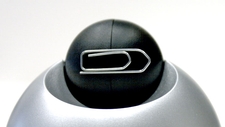Magnets Push or Pull Objects

TEKS Objective
The student will predict and describe how a magnet can be used to push or pull an object.
Essential Understanding
The student knows that energy, force, and motion are related and are a part of their everyday life.
Science Background
Background Information for Magnets: Canada Science and Technology Museum (website) – Everything you always wanted to know about magnets!
Signature Lesson
Magnetic Pick-ups: Science NetLinks (website) - Students learn that some materials are attracted to magnets, while others are not.
Magnetic Pick-ups
Science NetLinks, www.sciencenetlinks.com
How Strong is Your Magnet? Science NetLinks (website) - Measure the strength of a magnet and graph how a magnet’s strength changes with distance.
How Strong is Your Magnet?
Science NetLinks, www.sciencenetlinks.com
- Supporting Lessons
- Extensions
- Assessment Ideas
- Literature Connections
- Related
TEKS - Additional Resources
Supporting Lessons
Make a Magnet Map: Education.com (website) - Students create maps of their homes and use magnets to move pictures of their family members through their “houses” in this demonstration of a magnet’s attraction to metal.
Elaboration Lessons and Extensions
Magnets and Heat: The NEED Project (PDF) - Students seek to answer the question, “Does temperature affect the force of a magnet?”
Magnets and Heat
The NEED Project, www.need.org
Have a Magnet Marathon! Education.com (website) - Set up your own “magnet races” to explore with kindergarteners the properties and power behind magnets.
Assessment Ideas
Conduct student interviews and ask the questions below. Have students answer the questions verbally, using knowledge from the previous investigation and from their science notebook as resources.
- What are the physical properties of a magnet?
- Which objects are attracted to a magnet?
- What are the physical properties of an object that make them attracted to a magnet?
Literature Connections
What Makes a Magnet? Branley, Franklyn. (ISBN-13: 9780064451482)
Magnetism: A Question and Answer Book. Richardson, A. (ISBN-13: 9780736854474)
What Magnets Can Do. Fowler, Allan. (ISBN-13: 9780516460345)
Magnets Pulling Together, Pushing Apart. Rosinsky, Natalie. (ISBN-13: 9781404803336)
Additional Resources
Magnets and Springs: Crickweb (website) - In this interactive game for primary schools, students test various objects to see if they are attracted to a magnet. Scroll down to the “Magnets and Springs” activity.
TEKS Navigation
Grade 1
Need Assistance?
If you need help or have a question please use the links below to help resolve your problem.

Comments